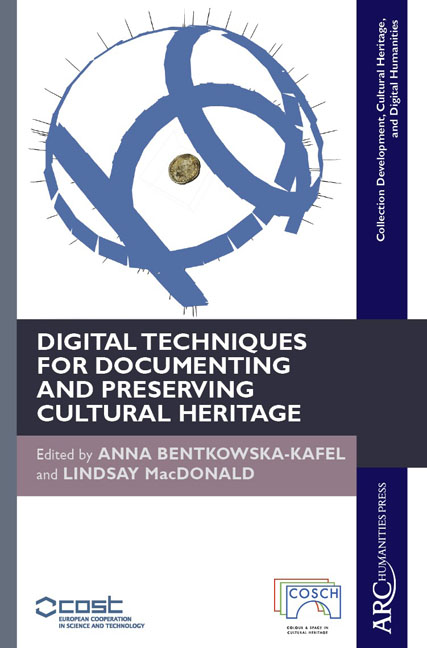Chapter 7 - Bremen Cog: Three Recording Techniques for One Object
Published online by Cambridge University Press: 26 January 2021
Summary
ABSTRACT
The Bremen Cog is a ship which was discovered in the river Weser close to the city of Bremen in 1962. Based on dendrochronological examination, the cog was built in 1380. It was successfully conserved and restored with polyethylene glycol (PEG) at the German Maritime Museum in Bremerhaven and has been on display since 2000.
Despite its age, the cog was well preserved and the steerboard side was almost complete. The reconstruction of the missing parts seemed therefore possible and of interest to the public.
The museum wanted to give a new lease of life to the cog and allow the public to see it from different viewpoints, while also communicating research results. The case study described in this chapter focuses on the three-dimensional monitoring of the ship's current condition, the understanding of wood deformation that occurred in the past, and preventing future changes. Another objective was to make a 3D computer model, based on the same digital data, for the participatory education of the public. This model of the ship will enable its continued public presentation, through a virtual surrogate, during the building works. The case study involved different tests: photogrammetry and Structure from Motion acquisition, 3D scanning and total station. Data analyses were also carried out.
Keywords: Deformation monitoring, large-scale objects, conservation, restoration, laser scanning, total station theodolite, photogrammetry, COSCH
Introduction
The Bremen Cog was discovered in 1962 near the city of Bremen, Northern Germany, in the river Weser. The decision was taken to salvage the ship. Most timbers, together with finds, were recovered from the river bed between 1962 and 1965. Thanks to dendrochronology analyses, the ship timbers were dated to the second half of the fourteenth century. Following a six year reconstruction at the purpose-built German Maritime Museum in Bremerhaven, the Bremen Cog was found to be 24 m long, 7 m wide and 4 m high. Its conservation took almost twenty years before it was possible to present the ship to the public in 2000. About a year later, the first signs of deformation occurred. After different trials to design a new support system for the ship, the museum decided to work on a system that would feed information to the future support girdle. At that point the relevance of designing a non-invasive, long-term deformation monitoring system became clear.
- Type
- Chapter
- Information
- Publisher: Amsterdam University PressPrint publication year: 2018



